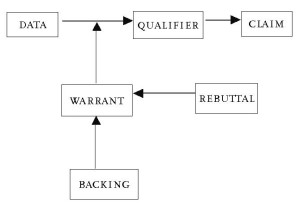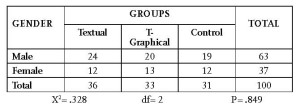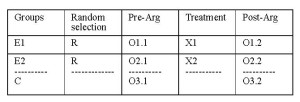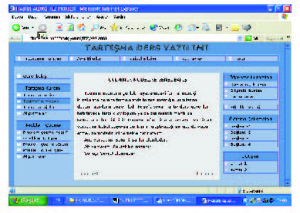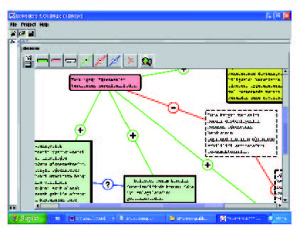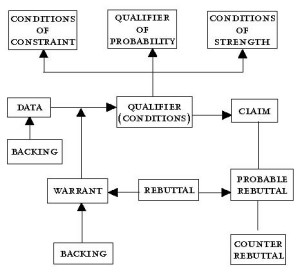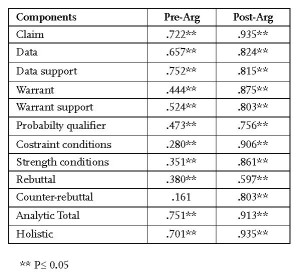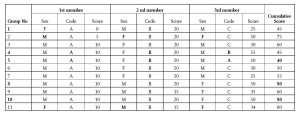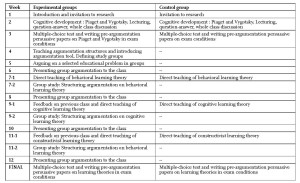ISSA Proceedings 2006 – Virtue Argumentation
 1. Virtue in ethics
1. Virtue in ethics
After centuries of obscurity, the study of the virtues is now one of the most prominent methodologies in ethics. Proponents of this so-called ‘aretaic turn’ differ substantially in the details of their respective proposals, but they tend to see a renewed focus on ethical virtues as a fresh source of insight into problems which have deadlocked more familiar approaches, such as Kantianism or utilitarianism. Moreover, virtue ethics has an immediacy to everyday human interests which its competitors have often been criticized as lacking. Yet, despite its fashionability, the roots of virtue ethics go back much further than those of its modern rivals.
An emphasis on virtue, or aretê, was characteristic of Ancient Greek thought from the time of Homer, if not earlier. Both Socrates and Plato could be said to have virtue theories, and the latter is responsible for the so-called Cardinal Virtues, of courage, temperance, wisdom (or prudence), and justice (Protagoras 330b). This list was subsequently incorporated into the Christian tradition by the successive authority of Saints Ambrose, Augustine of Hippo, and Thomas Aquinas. However the principal theorist of virtue in (Western) philosophy is Aristotle. Both of his major ethical works defend an account of the good life as an activity in accordance with our highest virtues. He catalogues many different ethical virtues. His earlier Eudemian Ethics (1220b-1221a) lists gentleness; courage; modesty; temperance; righteous indignation; the just; liberality; sincerity; friendliness; dignity; hardiness; greatness of spirit; magnificence; and wisdom. A similar list may be found in the later Nicomachean Ethics (1107a).
A distinctive feature of Aristotle’s approach is his ‘doctrine of the mean’: the thesis that each virtue represents the right degree of some property, of which either an excess or deficit would constitute vice. Hence every virtue is situated between a pair of opposite vices. For example, gentleness is the mean of irascibility and spiritlessness, and courage that of rashness and cowardice. This doctrine provides a plausible analysis of at least some familiar virtues, but few if any modern virtue theorists endorse it wholeheartedly. Nevertheless, the doctrine of the mean has a substantial intellectual legacy. In particular, since the good agent must be able to know what the mean is in any specific case, the doctrine obliged Aristotle to develop his ethics in an epistemological direction with the introduction of intellectual virtues. These include knowledge, art, prudence, intuition, wisdom, resourcefulness, and understanding (Nicomachean Ethics, Book VI). Chief amongst them is prudence, the traditional translation of phronesis, which might better be rendered as practical wisdom, or common sense. For Aristotle this is a disposition to deliberate well, that is, so as to arrive at a course of action which brings about the good.
2. Virtue in epistemology
In recent years virtue theory has not only undergone a resurgence in ethical thought, but has spilled over into other philosophical disciplines, most conspicuously epistemology. As in ethics, the aretaic turn in epistemology has been promoted as cutting through entrenched positions to provide new solutions to old debates. In the epistemological case, these debates principally concern the definition of such traditional concepts as knowledge, truth and justified belief. However, the proposed appeal to salutary intellectual virtues can take divergent forms. Different virtue epistemologists defend different sets of epistemological virtues. Nor is there consensus as to the precise role which the virtues should play in a reformed epistemology. They have been represented variously as possessing conceptual priority over the traditional concepts, or as explanatorily but not conceptually prior, or merely as a reliable guide.
However, there are two principal schools of thought within which most virtue epistemologists may be situated. The earlier of these, initially developed by Ernest Sosa, is an offshoot of epistemological reliablilism, that is the thesis that knowledge may be understood as the product of a particular sort of reliable process. In its virtue theoretic form the reliable process is characterized in terms of such ‘virtues’ as sight, hearing, introspection, memory, deduction, and induction (Battaly 2000).
By contrast, other virtue epistemologists, particularly Linda Zagzebski, deny that such innate faculties qualify as virtues. Instead, her virtues are acquired excellences. She lists ‘the ability to recognize the salient facts; sensitivity to detail; open-mindedness in collecting and appraising evidence; fairness in evaluating the arguments of others; intellectual humility; intellectual perseverance, diligence, care and thoroughness; adaptability of intellect; the detective’s virtues: thinking of coherent explanations of the facts; being able to recognize reliable authority; insight into persons, problems, theories; the teaching virtues: the social virtues of being communicative, including intellectual candour and knowing your audience and how they respond’ (Zagzebski 1996, p. 114). Elsewhere she also identifies intellectual courage, autonomy, boldness, creativity, and inventiveness as virtues (Zagzebski 1996, pp. 220, 225). Although Zagzebski’s list of virtues more closely resembles Aristotle’s list of intellectual (or indeed moral) virtues, several of Sosa’s virtues could also be found on that list. Perhaps, as some commentators have argued (Battaly 2000), a rapprochement between these ostensibly divergent schools is overdue.
3. virtue in argument
We have seen how virtue theory has found proponents in both ethics and epistemology. This paper will argue that it is also a potentially rich and fruitful methodology for informal logic. Our first step in this argument will be to address some recurring problems which beset all virtue theories (cf. Statman 1997, pp. 19 ff.). If these problems prove especially pernicious in the case of informal logic, we will have shown that the methodology is poorly suited to its intended application. Conversely, the provision of satisfactory answers should leave us well-placed to address issues peculiar to argumentation. In the remainder of this section we shall explore lines of response to each of these issues.
3.1 Justification
The first of these problems is one of justification: if argumentational virtues are to be understood as possessing normative force, where does that normativity come from? This is a problem for any foundational theory. One cannot keep appealing to ever deeper foundations on pain of infinite regress. It is not clear that virtue theories, whether in ethics, epistemology, or argumentation, are any worse placed than foundational theories of other kinds. More specifically, the virtue theorist can, as other theorists do, defend his position as coherent with our intuitions. Indeed, in so far as his virtues are familiar and intuitive, he is better placed to do this than many of his competitors. In the next section we shall see whether there are familiar and intuitive argumentational virtues to be found.
3.2 Universality
A second problem arises from the observation that different cultures or communities may subscribe to different conceptions of the ideal arguer. If we are comfortable with this, we appear to sacrifice the traditional assumption of logical universality; if not, how do we ground a common conception? Different cultures endorse different virtues. In ethics these can differ profoundly. In argumentation the differences are perhaps less extreme, but concerns may remain. In particular, some accounts of ethical conduct seek to associate certain virtues with specific groups, identified by race, class, or gender. This is also a familiar tactic in discussion of rationality: might there be, for example, specifically male or female argumentational virtues? If so, an argument which was good for a man might not be good for a woman, and vice versa.
Moreover, a superficial appearance of similarity can mask a deeper division. For example, the Brahma Viharas (or divine abiding practices) of Buddhism may be stated as metta (loving-kindness), karuna (compassion), muddita (appreciative joy), and uppeka (equanimity). These seem closely related to the virtues itemized above, tempting us to hypothesize some deep, intercultural consensus. However, their practical application can be surprising: for instance, many Buddhists interpret uppeka as discouraging smiling.[i] A pessimistic response to such moments of culture shock would be to suspect that the sets of virtues endorsed by different cultures may be irreconcilable.
In virtue ethics, a standard response to the former problem is to stipulate that all competent virtues must apply equally to all sentient agents. This rules out merely local ‘virtues’, and ‘virtues’ predicated of a specific race, class, or gender. The same tactic could be deployed against putative local argumentational virtues. The latter problem may be addressed in a similarly robust manner by insisting that, if the different sets of virtues are genuinely irreconcilable, some (perhaps all) of them must be spurious, even if we are unable to determine which. Alternatively, both of these problems could be understood as opportunities for virtue argumentation to capture pre-existing debates over the nature of logic. The latter situation—irreconcilable accounts of logical inference, each claiming to apply universally—is otherwise familiar as (global) logical pluralism. This scenario has been defended by some proponents of non-classical logics as capturing their quarrel with classical logic. Of course, the advocates of these systems do not characteristically wish to deny topic neutrality, let alone to relativize logical inference to identity groups, as embracing the former problem would suggest. However, there are other more radical critics of logic who do. Notably, some feminist commentators have sought to stigmatize (formal) logic as inherently masculine, and to promote alternative, female modes of reasoning (see the papers in Falmagne and Hass 2002, for further discussion). Anyone endorsing this position would presumably be comfortable with local argumentational virtues specific to each gender.
3.3 Applicability
How should virtue argumentation be applied in practical cases? In virtue ethics, practical advice often takes the form of a recommendation to act as an ideal ethical agent would act. Hence virtue theories are sometimes cashed out as “What would [insert your choice of Heroic Figure] do? theories. But is this injunction helpful to the non-ideal arguer? One problem with this approach is that the right course of action for an ideal agent may not be right for anyone else. For an example showing that this worry applies to argumentation too, consider the following anecdote from the British barrister and humorist John Mortimer:
I greatly admired the smooth and elegant advocacy of Lord Salmon, who … would … stroll negligently up and down the front bench lobbing faultlessly accurate questions over his shoulder at the witness-box. Here, I thought, was a style to imitate. For my early cross-examinations I would … pace up and down firing off what I hope were appropriate questions backwards. I continued with this technique until an unsympathetic Judge said, “Do try and keep still Mr Mortimer. It’s like watching ping-pong. ’ (Mortimer 1984, p. 96)
Reflection on this anecdote may also show how the problem may be resolved. The young John Mortimer may have believed that he was conducting his arguments in the style of Lord Salmon, but as is painfully obvious to his later self, the imitation was wholly superficial. He ends up capturing some inessential mannerisms, but misses the argumentational virtues. (Presumably if he had got these too, the judge would have been more sympathetic.) The point is to imitate the right thing. This suggests that it would be better to abstract virtues which we may imitate from the behaviour of the virtuous than to attempt to imitate the virtuous directly.
3.4 Status of Arguments
A substantial innovation of most virtue theories is that they are explicitly agent-based, rather than act-based. This can make the appraisal of acts unusually problematic. Moral and epistemic virtues are typically ascribed to the agent, not to his deeds or beliefs. In the case of argument, this would mean that virtues were qualities of the arguer, rather than of his arguments. Of course, it is entirely reasonable to speak of the ‘virtues of an argument’, and we could take these ‘virtues’ as primitive instead. In that case, we could still talk of virtuous arguers, by defining their virtues in terms of the virtues of their arguments, making the virtuous arguer one disposed to advance or accept virtuous arguments. However, the virtue talk in this approach would be wholly ornamental, since the ‘virtues of an argument’ could presumably be cashed out in terms of more familiar forms of argument appraisal. Hence, if a virtue theory of argumentation is to do any work, it must be agent-based. Is this a problem for the appraisal of arguments?
It would seem to present a very specific problem, which does not arise in the corresponding ethical and epistemological cases. Would not any agent-based appraisal of argumentation commit the ad hominem fallacy? In general terms, an ad hominem argument may be said to ‘consist in bringing alleged facts about Jones to bear in an attempt to influence hearers’ attitudes toward Jones’s advocacy-of-P’ (Brinton 1995, p. 214). This seems to fit exactly. Jones’s virtues (or vices) are alleged facts about him, his argument-that-P is an instance of his advocacy-of-P, and our appraisal of his presentation of that argument is presumably an attempt to influence hearers’ attitudes towards it. Thus, if all ad hominem arguments are fallacious, agent-based appraisal must be fallacious too, and can therefore have no normative force.
But are all instances of ad hominem necessarily fallacious? Conventional textbook treatments of the fallacies usually suggest as much, but it is not hard to find arguments that satisfy the description above, and yet seem perfectly sound. Indeed, many treatments of the ad hominem in the informal logic literature argue that it ‘is a legitimate form of argument and is logically acceptable in many, perhaps most, of its actual occurences’ (Brinton 1995, p. 222). For, if the alleged facts about the arguer are relevant to the persuasive force of his argument, where is the fallacy in using them to appraise his argument? All that remains is to defend the relevance of the argumentational virtues, which we shall tackle in the next section. If this can be achieved, then our application of virtue theory to argument should be no worse off than applications to ethics or epistemology.
4. What sort of virtues?
We have seen that a virtue theoretic approach to argument must focus on agents rather than actions, seeking to identify those qualities most likely to give rise to particularly desirable (or undesirable) behaviour. This entails distinguishing good from bad arguers rather than good from bad arguments. This emphasis may be seen in some informal logicians’ work, although such work typically makes no reference to virtue theory. Moreover, many of the qualities proposed by virtue epistemologists as characteristic of the good knower are also plausible desiderata for the good arguer. Some of the virtues advocated in other species of virtue theory may also be of use. In this section we shall see how a list of argumentational virtues (and vices) might be assembled from these diverse sources.
To begin with, many of Zagzebski’s epistemological virtues (listed in Section 2) would seem as relevant to argument as to knowledge. Some other applications of virtue theory may seem even closer to our concerns. For example, Richard Paul has applied virtue theory to critical thinking. For Paul, the following virtues distinguish the ‘true critical thinker’ from the superficial rationalizer: intellectual courage; intellectual empathy; intellectual integrity; intellectual perseverance; faith in reason; and fairmindedness (Paul 2000, p. 168). Only the true critical thinker has genuine understanding, a quality thus lacking, Paul maintains, in those whose education has overlooked the pursuit of virtue. However, his emphasis on virtue in the service of the epistemological concept of understanding makes Paul’s proposal of a piece with mainstream virtue epistemology. Hence, despite the proximity of critical thinking to informal logic, these are not necessarily specifically argumentational virtues.
Such virtues might be sought in virtue jurisprudence, which seeks to extend the scope of the aretaic turn to the philosophy of law, much as we are extending it to the philosophy of logic. Since law is largely composed of argument, this seems like a good place to look. Specifically, Lawrence Solum itemizes the following jurisprudential virtues (and corresponding vices): judicial temperance vs. corruption; judicial courage vs. civic cowardice; judicial temperament vs. bad temper; judicial intelligence vs. incompetence; judicial wisdom vs. foolishness (Solum 2003). However, these are virtues for the judge, not the advocate, to be employed in the appraisal, rather than the construction, of arguments. It is important when putting together an argument to be able to anticipate its appraisal, and the appropriate appraisal of an interlocutor’s argument is essential to debate. Nevertheless, Solum’s virtues at most characterize only one aspect of argumentation.
A much less recent study of advocacy may help to fill out the roster of jurisprudential virtues. The following list is derived from the rhetorical manual of the Roman orator Quintilian: respect for public opinion; fortitude; bravery; integrity; eloquence; honour; responsibility; sincerity; common sense; justice; knowledge; sense of duty; and [moral] virtue. (Institutio Oratoria, xii. 1. 12-35, as glossed in Murphy and Katula 1995, p. 201). Unfortunately, Quintilian is extremely concise, and his focus is rhetorical rather than logical, leading him to endorse ‘methods of speaking which, despite the excellence of their intention, bear a close resemblance to fraud’ (xii. 1. 41). That does not sound virtuous, although several of his specific virtues echo ones we have already endorsed. We need to keep sight of core principles, lest our catalogue of virtues run astray. As far as virtue jurisprudence is concerned, we can do no better than to quote that notable ideal arguer Socrates: ‘apply your mind to this: whether the things I say are just or not. For this is the virtue of a judge, while that of an orator is to speak the truth’ (Apology 18a, West trans.).
This raises the question of what the virtues of the ideal arguer are expected to track. Ethical virtues track the good: virtuous people are disposed to do good things. Epistemological virtues track truth: virtuous knowers are disposed to believe true propositions. What should argumentational virtues track? Arguments cannot be true or false, but good arguments are often characterized as truth-preserving. Of course, outside of deductive logic, this preservation cannot be guaranteed, but that still makes it intelligible as a disposition. So, if argumentational virtues track truth-preservation, virtuous arguers will be disposed to accept or propose arguments which tend to preserve truth. Virtuous arguments will be those which virtuous arguers present or accept, when acting in accordance with their virtues. Or, more straightforwardly, the virtues of argument are those which propagate truth. By this standard, we can see that most of the epistemological and jurisprudential virtues considered above will also serve as argumentational virtues.
So far we have considered virtues relevant to argument, but advocated by virtue theorists from other disciplines. What about characterizations of argument which tacitly lend themselves to virtue theoretic interpretation? One such account is that of Daniel Cohen. He has seldom, if ever, explicitly endorsed a virtue theory—his paraphrase of Barry Goldwater, that ‘agreeableness in the pursuit of resolution is no virtue, and tenacity in the defence of sound conclusions is no vice’, might be seen as decorative (Cohen 2004, p. 85). However, his approach pays regard to arguers as well as arguments, he alludes to Aristotle’s doctrine of the mean, and he makes explicit use of the concept of an ideal arguer. It is from this concept that we gain an impression of his argumentational virtues: ‘genuine willingness to engage in serious argumentation … willingness to listen to others and to modify [one’s] own position, and … willingness to question the obvious … should be prominently included in our descriptions of Ideal Arguers’ (Cohen 2005, p. 64). He pays more attention to argumentational vices, which have been somewhat neglected in our survey. He explicitly situates willingness to listen between two positions he identifies as the ‘Deaf Dogmatist’, who ignores relevant objections and questions, and the ‘Concessionaire’, who undermines his own arguments with unnecessary concessions. With a little reflection we can see that Cohen’s other two virtues are also means between pairs of vices identified by him. Willingness to question occupies middle ground between the ‘Eager Believer’, who endorses positions uncritically, and the ‘Unassuring Assurer’, who insists on defending what he might otherwise have been freely granted. Lastly, willingness to engage is opposed to the ‘Argument Provocateur’, who argues at all times, even when it is least appropriate, and the quietist, who won’t argue at all.
5. Dialectical nature of argument
We have argued that epistemological virtues can be profitably applied to argument, perhaps as fine-tuned along the lines suggested by Cohen. However, there are still some significant differences between epistemology and logic. Argument, unlike knowledge, is intrinsically dialectical. Even when one argues with oneself, one plays two roles: that of arguer and respondent. This aspect of argument is one that a virtue theory should respect. Specifically, we might hope that it would explain a distinctive feature of arguments, that they can be bad in two ways: they can confuse others and they can confuse the arguer.
A perennial criticism of virtue theory in ethics and epistemology is that the theory does not adequately distinguish virtues from skills. Some virtue theorists, such as Sosa, explicitly identify the two, others, including Zagzebski, strive to maintain the distinction, but have been criticized as not succeeding (Battaly 2000, for example). Philippa Foot retrieves an account of this distinction from Aristotle (1140b) and Aquinas: ‘In the matter of arts and skills, they say, voluntary error is preferable to involuntary error, while in the matter of virtues … it is the reverse’ (Foot 1978, p. 7). This seems right: exclaiming ‘That was on purpose!’ might help exculpate a failure of skill, falling off a skateboard say, but not a failure of virtue, such as leaving someone to walk home in the rain having forgotten to meet them by car.
One reason why this ostensibly straightforward distinction has nevertheless become confused in both ethics and epistemology may be that it has little work to do in either field. It is hard to make sense of what an ‘ethical skill’ might be, unless it is a virtue. Conversely, and pace Zagzebski, epistemological virtues are apt to resemble skills, in so far as both are deployed in pursuit of knowledge. However, when we turn to argument, the situation is more interesting. When we confuse ourselves, we have been let down by our argumentational skills; when we (deliberately or otherwise) confuse others, we display a lack of argumentational virtue.
The contrast might best be illustrated by an example. The exact same fallacy, say an equivocation on a word with two subtly but crucially distinct senses, could result from either a failure of virtue, if deliberately intended to deceive, or from a failure of skill, if the utterer did not notice the double meaning. The latter failure would also entail a (different) failure of virtue, since a virtuous arguer would have appreciated the potential for deception in his words. Some fallacy theorists have sought to represent this distinction as one between two different sorts of fallacy (Walton 1996, p. 67, attributes this view to Max Black). But that seems to miss the point: the argument is the same, so, since a fallacy is a sort of argument, the same fallacy should be committed. What is at issue is why. In fact, every fallacy can be deployed in ways that are either vicious but skillful, or vicious and not skillful. To see this, observe that any fallacy can be used deliberately to deceive another, who, if he lacks the skills to realize that he has been deceived, may guilelessly, but negligently, repeat the fallacy to a third party.
Is it possible for virtuous arguments to be either skillful or unskillful? Optimal arguments will clearly be both skillful and virtuous. Unskilled virtuous arguments are harder to find. In Plato’s Apology, Socrates professes that his arguments will be of this kind (17b). However, what he clearly intends is that his arguments will lack the meretricious skills of the sophists: skills inconsistent with virtue. On a broader understanding of ‘skill’, his arguments are highly skillful. We have seen that no fallacy can be unskilled but virtuous, because the potential for misunderstanding which results even from an unintentional fallacy is inconsistent with virtue. However, not all failures of skill are opportunities for misunderstanding. Some arguments fail innocently.
6. Conclusion
So what have we achieved? Phillipa Foot concludes her most recent book on virtue ethics as follows:
‘I have been asked the very pertinent question as to where all this leaves disputes about substantial … questions. Do I really believe that I have described a method for settling them all? The proper reply is that in a way nothing is settled, but everything is left as it was. The account … merely gives a framework within which disputes are said to take place, and tries to get rid of some intruding philosophical theories and abstractions that tend to trip us up.’ (Foot 2001, p. 116)
If we can say no more than this we shall still have made significant progress. In particular, this new framework has the potential to inspire a novel take on many open problems in argumentation theory. There is much work to be done in the provision of sensitive analyses of individual virtues. For instance, fairmindedness is essential to the avoidance of bias, although it can be confused with apathy or indifference. Even more significantly, virtue argumentation holds out the possibility of a systematic basis for the frequently unanalyzed appeals to moral obligations to be found in many discussions of reasoning.
NOTES
[i] The day I gave this paper in Amsterdam I was reminded of this by a television commercial for the Tourism Authority of Thailand. The advert commemorated the Diamond Jubilee of King Bhumibol, who was shown in multiple clips, in each of which, as an exemplary Buddhist monarch, he was unsmiling. It ended with the Authority’s Western-oriented slogan: ‘Come to Thailand—Land of Smiles’.
REFERENCES
Battaly, H. D. (2000). What is virtue epistemology? In: Proceedings of the Twentieth World Congress of Philosophy.
Brinton, A. (1995). The ad hominem. In: H. V. Hansen and R. C. Pinto (Eds.), Fallacies: Classical and Contemporary Readings (pp. 213-222), University Park, PA: Pennsylvania State University Press.
Cohen, D. (2004). Arguments and Metaphors in Philosophy. Lanham, MD: University Press of America.
Cohen, D. (2005). Arguments that backfire. In: D. Hitchcock and D. Farr (Eds.), The Uses of Argument (pp. 58-65). Hamilton, ON: OSSA.
Falmagne, R. J. and M. Hass (Eds.) (2002). Representing Reason: Feminist Theory and Formal Logic. Lanham, MD: Rowman & Littlefield.
Foot, P. (1978). Virtues and Vices. Oxford: Blackwell.
Foot, P. (2001). Natural Goodness. Oxford: Clarendon.
Mortimer, J. (1984). Clinging to the Wreckage. Harmondsworth: Penguin.
Murphy, J. J. and Katula, R. A. (1995). A Synoptic History of Classical Rhetoric. Mahwah, NJ: Lawrence Erlbaum Associates.
Paul, R. (2000). Critical thinking, moral integrity and citizenship: Teaching for the intellectual virtues. In: G. Axtell (Ed.), Knowledge, Belief and Character: Readings in Virtue Epistemology (pp. 163-175). Lanham, MD: Rowman & Littlefield.
Solum, L. B. (2003). Virtue jurisprudence: A virtue-centered theory of judging. In: M. Brady and D. Pritchard (Eds.), Moral and Epistemic Virtues (pp. 163-198). Oxford: Blackwell.
Statman, D. (Ed.) (1997). Virtue Ethics: A Critical Reader. Washington, DC: Georgetown University Press.
Walton, D. (1996). Fallacies Arising from Ambiguity. Dordrecht: Kluwer Academic Publishers.
West, T. G. and G. S. West (1984). Four Texts on Socrates. Ithaca, NY: Cornell University Press.
Zagzebski, L. (1996). Virtues of the Mind. Cambridge: Cambridge University Press.

